#Bridget Bishop
Explore tagged Tumblr posts
Text

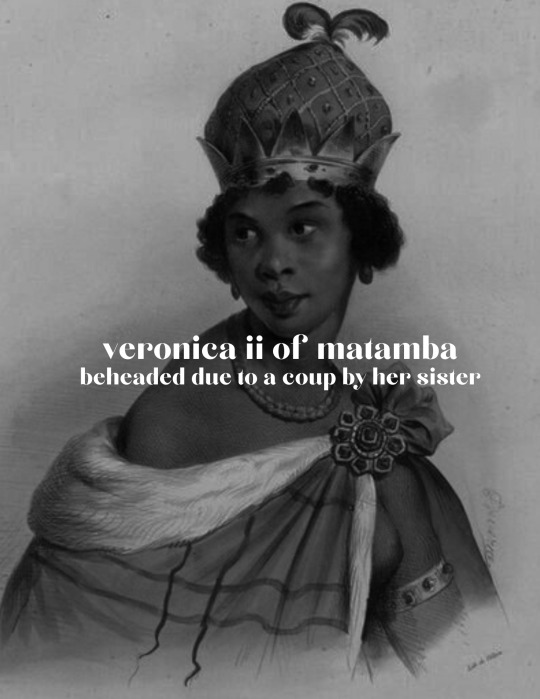
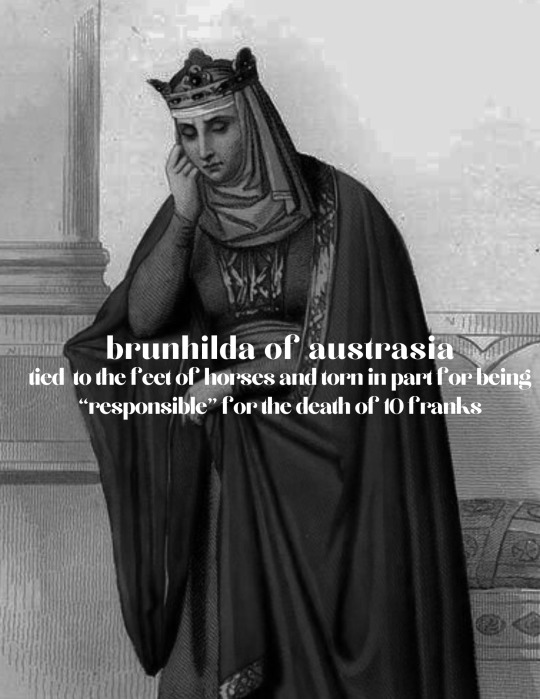
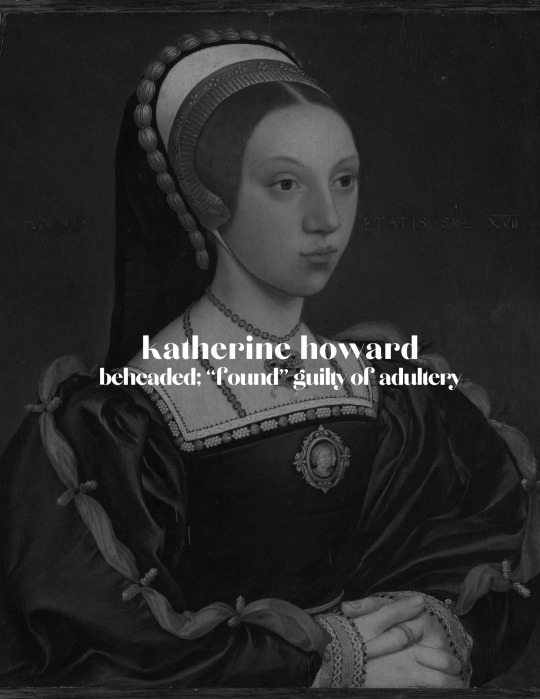
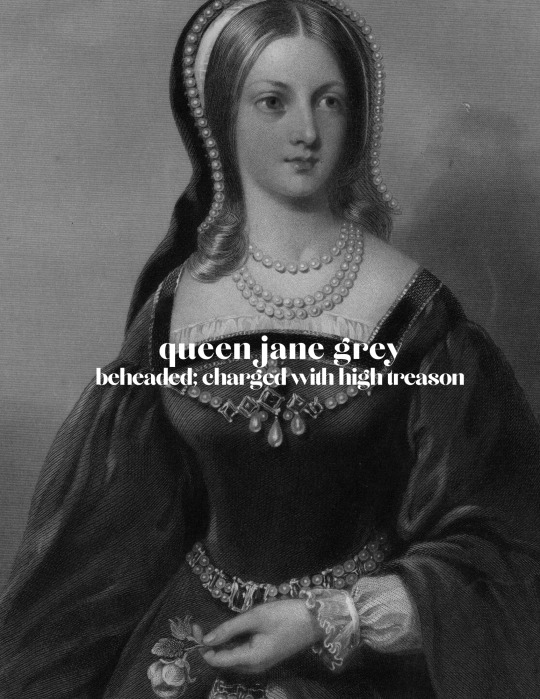
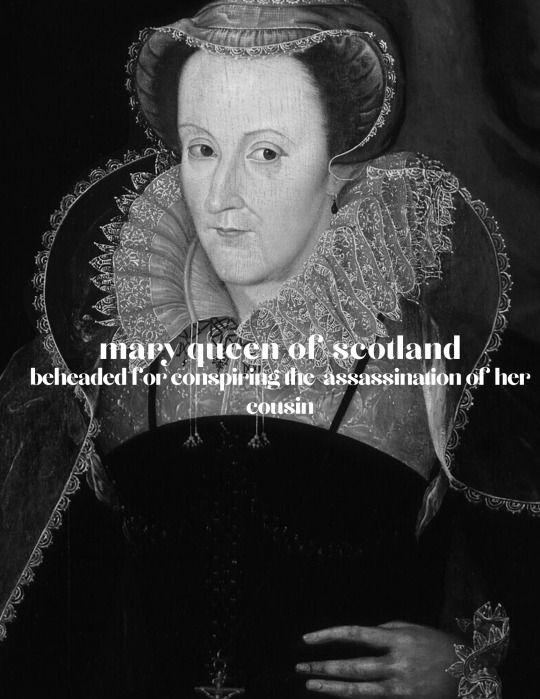
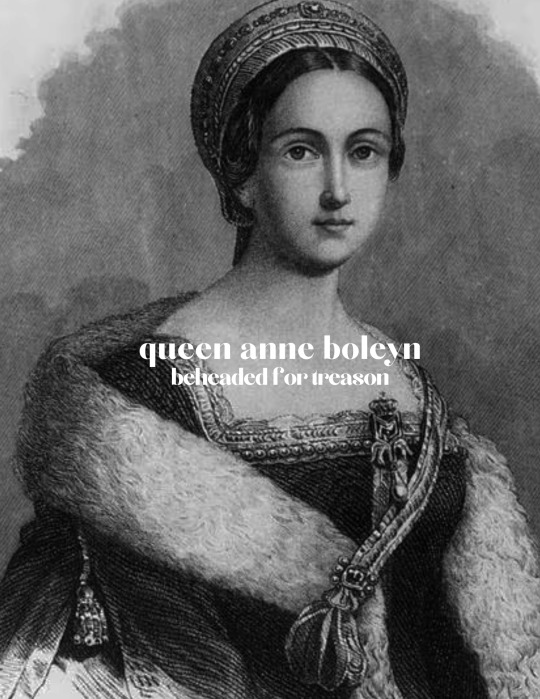


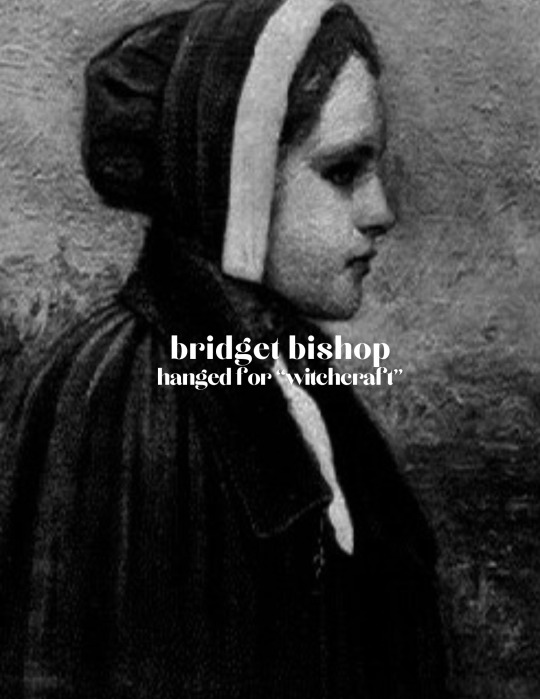


history + women who were executed
#some of them 10000% did not deserve exeution#history#jeanne d'arc#veronica ii of matamba#brunhilda of austrasia#katherine howard#queen jane grey#mary queen of scots#queen anne boleyn#maria of antioch#marie antoinette#bridget bishop#olympe de gouges#fannie efimovna
670 notes
·
View notes
Text
Poppets, Pain, and Power: Folk Magic in Fantasy RPGs

I’ll be occasionally sharing some of my art depicting historical folk magic amulets, talismans, and other ritual objects, along with a bit of history and ways to adapt them to your favorite fantasy game.
IN HISTORY: The poppet is closely tied to colonial American witch trials. Bridget Bishop, the first woman hanged in the Salem trials, was accused of hiding these dolls—made of rags and hog’s hair—in her walls, using them to torment her neighbors by stabbing them with pins. Like the so-called “voodoo doll,” a poppet is a tool of sympathetic magic. The creator links the fate of the effigy to that of a real person through a bit of hair or fabric. It's worth noting that such dolls aren't always used for sinister purposes: Poppets can also play a role in healing and love magic.
IN YOUR GAME: This magic item binds itself to a target through hair, blood, or a personal token. Pricking it with a needle inflicts pain, setting it near flame causes fevered nightmares, and unmaking it severs the bond—though the target may suffer lasting effects. Healers can also use them to transfer harm away from a loved one, taking the burden upon themselves. Wise magicians know that using a poppet for harmful magic is risky: If it falls into the wrong hands, its power can be turned against its maker.
#folk horror#folk magic#witchcraft#salem#witch trials#occult#poppet#sympathetic magic#Bridget Bishop#gaming#magic#DND#dungeons & dragons
5 notes
·
View notes
Text

On 10 June 1692, Bridget Bishop was hanged for witchcraft.
"An outspoken, brightly-garbed woman, Bridget ran a tavern, sold intoxicating spirits, was known to be in an abusive relationship, and appeared in town battered & bruised."
Deborah Harkness, A Discovery of Witches
#Never Forget#AllSoulsSeries#ADOW#Deborah Harkness#Bridget Bishop#1692#Lest We Forget#hanged for witchcraft#life#Other Lives
10 notes
·
View notes
Text














Bridget Bishop was hanged at Gallows Hill near Salem on June 10, 1692 for "certaine Detestable Arts called Witchcraft and Sorceries".
#The Salem Witch Trials Memorial by Maggie Smith and James Cutler#Salem#Bridget Bishop#hanged#10 June 1692#anniversary#US history#travel#summer 2018#cityscape#architecture#Old Burying Point Cemetery#Charter Street Burying Point#tombstone#grave#New England#tourist attraction#landmark#original photography#free admission#vacation#USA
1 note
·
View note
Text
A Brief History of Witchcraft in Norwich and East Anglia | Cultura Obscura
https://www.culturaobscura.com/history-of-norwich-east-anglia-witches-matthew-hopkins/
Bridget Bishop and the connection to Norfolk, UK.
1 note
·
View note
Text

#descendants#disney descendants#disney#descendants rise of red#rise of red#disney rise of red#descendants 4#the rise of red#descendants ror#descendants the rise of red#descendants queen of hearts#queen of hearts descendants#bridget descendants#descendants bridget#bridget of wonderland#bridget of hearts#descendants memes#descendants shitpost#marvel#kate bishop#chat ive made like sixteen of these#my friend requested them#because we are priating the new agatha all along show
36 notes
·
View notes
Text

This is how I felt every time the characters brought up the Sewer Dog. Jonathan, I do not think every vampire who is at the docks and/or in a sewer is the Sewer Dog.
#my art#vampyr#vampyr 2018#pidgeon meme#vampyr game#jonathan reid#William Bishop#Sewer beast#Fergal Bansha#Old Bridget#Meme#Taking a break from writing to draw silly memes#This is equal to watering my crops
29 notes
·
View notes
Text
Red, White & Royal Blue (2023) Review
A feud between Alex Claremont-Diaz the son of the American President and Prince Henry part of the British monarchy gains international media attention due to an incident, they must work together in order to repair the American/British relationship but it was never going to be that simple. ⭐️⭐️⭐️⭐️ Continue reading Untitled

View On WordPress
#2023#Akshay Khanna#Amazon Original#Amazon Prime#Amazon Prime Video#Aneesh Sheth#Annabella King#Based on a Novel#Bridget Benstead#Casey McQuiston#Charles Nishikawa#Comedy#Ellie Bamber#Jemma Redgrave#Joy-Ann Reid#Martin Bishop#Matthew Lopez#Michael Ayala-Cole#Nicholas Galitzine#Prime Video#Rachel Hilson#Red White & Royal Blue#Review#Rita Estevanovich#Rom Com#Romance#Romantic Comedy#Sarah Shahi#Sharon D. Clarke#Stephen Fry
2 notes
·
View notes
Text


So Tyler's shirt for Chicago n1 featured "the witch house," former home of Jonathan Corwin, one of the judges who presided over the Salem witch trials. Corwin was one of nine judges involved in the trials, though not one of the original eight members of the court. He replaced Nathaniel Saltonstall, who resigned from the court after the first case brought to the grand jury ended in the execution of Bridget Bishop.
Nine judges? Dissent (betrayal?) of one of the judges that led to the execution of a Bishop? Hello???
#desperately hoping we get more info about the meaning behind the shirts after the us leg#i know ppl on twitter/discord have already found a bunch but there has to be so much more we haven't uncovered yet#m
56 notes
·
View notes
Text

STARTING WITH B

MASCULINE︰ bailey. baker. baldric. baldwin. balfour. banks. barclay. barnabas. barnaby. barney. barret. barrett. barrie. barry. bart. bartholomew. basil. baxter. bayley. baylor. bear. beau. beauden. beaumont. beck. beckett. beckham. bellamy. ben. benedict. benj. benjamin. benji. benjy. bennett. bennie. benny. benson. bentley. benton. bernard. bernie. berny. berry. bert. bertie. bertram. bertrand. bevan. bevis. biff. bill. billie. billy. bjorn. blaine. blair. blake. blaze. blye. blythe. bo. bob. bobbie. bobby. bodhi. bodie. boone. boston. bow. bowen. bowie. boyce. brad. braden. bradford. bradley. brady. braeden. braiden. braith. bram. branden. brandon. brandt. branson. brant. brantley. braxton. brayden. braydon. braylen. braylon. braylyn. brecker. brendan. brenden. brendon. brennan. brent. brenton. bret. brett. brian. briar. brice. bridger. briggs. brin. brion. brixton. brock. brodie. brody. bronson. brook. brooks. bruce. bruno. bryan. bryant. bryce. brycen. bryon. bryson. buck. bud. buddy. bugsy. burke. burt. burton. buster. buzz. byrne. byron. bysshe.

FEMININE︰ bailee. bailey. bambi. barbara. barbie. baylee. bayley. baylor. bea. beatrice. beatrix. beau. becca. becci. bee. belen. bella. bellamy. belle. berkeley. berkley. bernadette. berry. bertha. bess. beth. bethany. betsy. betty. bev. beverley. beverly. bexley. bianca. billie. birdie. blaine. blair. blaire. blaisha. blake. blakely. blessing. blondie. blossom. blue. blythe. bonita. bonnie. braelyn. braelynn. braya. braylee. braylynn. breana. bree. brenna. brennalyn. bria. briana. brianna. briar. bridget. bridgette. briella. briella.. brielle. brinley. bristol. britannia. britney. brittani. brittania. brittany. brittney. brook. brooke. brooklyn. brooklynn. bryana. bryanna. brylee. brynlee. brynleigh. brynn. bunny. burgundy.

NEUTRAL︰ bail. bailey. baker. bale. ballad. bandit. bang. bank. banks. banner. barker. barns. barracuda. barrel. basil. basket. bass. bassdrop. bassline. bat. battery. battle. bay. baylor. baylor.. beach. beacon. beamer. bear. beau. beaux. beck. bee. beg. behold. believe. bellamy. bender. bentlee. berkeley. berkley. beta. between. beverly. bexley. beyond. bid. birch. bird. bishop. bit. bite. black. blaine. blair. blaire. blaise. blake. blame. blayke. blaze. bless. blessing. blight. blip. bliss. blister. blue. bluff. blur. blurb. blythe. bobby. bolt. bone. bonkers. boston. botany. boulevard. bow. bowie. brack. braelyn. brain. bramble. bran. branch. brass. bravery. braylen. braylin. braylynn. breach. break. breakthrough. breck. brecken. breeze. brennan. brentley. brett. brexley. briar. brick. brig. bright. brighton. briley. brine. britton. brixton. bronco. bronx. brook. brooks. brown. brute. bryar. bryer. bryn. bubble. bubblegum. buck. bud. buddy. bull. bulldog. bullet. bumble. bun. bungee. bunny. burns. bury. bus. busy. butter. butterfly. button. buzz. bygone.

23 notes
·
View notes
Text
Me an my neurotic brain decided to do a deep dive on what these dates could hint at/mean:

Feb. 16th - Lizzie Olsen’s Birthday

August 28th - Cthon Comic Book debut/Deadpool Team Up # 1


June 2nd - Bridget Bishop is the first convicted in the Salem Witch Trials/House of M publication


December 28th - Marvel Day

January 21st - Betty Parris and Abigail Williams fall “ill” at the start of the Salem Witch trials/ Mystique Vol 1 # 21


October 13th - Wanda Maximoff’s “Death”/Polaris’ “possible” comic book debut/This years’s full moon (In witchcraft, the full moon is associated with heightened energy, emotions, and power. It can also represent growth and transformation, and a connection to the spiritual realm—meaning it could lead to a “The Witches Road” revival of Wanda).

#marvel#marvel mcu#wandavision#agatha all along#agatha harkness#witches road#everything has meaning#marvel easter eggs#my roman empire
22 notes
·
View notes
Text
Who I write for /Rules
Masterlist
I'm new-ish to writing (i used to write fanfiction when i was like 13. i'm 19 now and write very rarely) but I really wanna do it again.
So this is a list of characters/fandoms I write for as well as some rules for asks. Some things may be missing from this list so if you dont see something on this list, feel free to ask. :))
Do add as much detail as you want to a request and please ALWAYS have at least some sort of prompt, as i'm really not good with coming up with storys on my own yet.
I WILL NOT DO SMUT SO DONT REQUEST IT! I might however do spicy stuff (Nothing more than making out or somewhat implied stuff tho).
My writing will be mostly pg 13 but please still be careful if the fic-warnings include sensitive topics, and i might repost some 18+ things so be careful when navigating my blog.
Please be nice and have manners when requesting.
Also please include what gender/pronouns you want the reader to have (i write for all genders). If its not included I will default it as gender neutral. :)))
I also write poly relationships and AUs.
Some things I will not write include: Pregnancy, toxic/yandere, student x teacher, love triangles.
(Also english isnt my first language, and even though, in my opinion, i speak it really well, if they are any mistakes, thats why.)
Heartbreak high
Harper Mclean
Quinni Ghallager-Jones
Darren Rivers
Spencer "Spider" White
Anthony "Ant" Vaughn
Malakai Mitchel
Sally face
Sal Fisher
Travis Phelps (male or gn readers)
Larry Johnson
Ashley Campbell
Harry Potter
Fred Weasley
George Weasley
Charly Weasley
Bill Weasley
Cedric Diggory
Olliver Wood
Draco Malfoy (+6th year only)
Theodore Nott (+6th year only)
Marauders
James Potter
Sirius Black
Remus Lupin
Regulus Black
Evan Rosier
Barty Crouch jr
Pandora Rosier
Lilly Evans
Marlene Mckinnon
Hogwarts Legacy
Sebastian Sallow
Ominus Gaunt
Gareth Weasley
Poppy Sweetings
Imelda Reyes
Die drei fragezeichen / the three investigators
Bob Andrews
Peter Shaw
Justus Jonas
Skinny Norris
Twilight
Jasper Hale
Emmet Cullen
Carlisle Cullen
Esme Cullen
Rosalie Hale
Alice Cullen
Sam Uley
Paul Lahote
Charlie Swan
Leah Clearwater
Jacob Black
Pjo
Let me know if you want book or show
Percy Jackson
Annabeth Chase
Luke Castellan
Clarrisse La Rue
Selena Beauregard
Charles Beckendorf
Ethan Nakamura
Nico di Angelo (no romantic fem readers)
Rachel Elizabeth Dare
Will Solace
Travis Stoll
Connor Stoll
Hazel Levesque (no romantic)
Jason Grace
Leo Valdez
Piper Mclean
Magnus chase
Magnus Chase
Samirah al Abbas ( no romantic)
Alex Fierro
Blitzen
Hearthstone
Mallory Keen
TJ (Thomas Jefferson jr)
MCU (Avengers)
Bucky Barnes
Steve Rogers
Tony Stark
Sam Wilson
Natasha Romanoff
Yelena Belova
Peter Parker (tom holland and andrew garfield)
MJ
Wanda Maximof
Piedro Maximof
Clint Barton
Scott Lang
Stephen Strange
Kate Bishop
MCU ( Guardians of the galaxy)
Peter Quill
Daredevil (Season 1)
Matt Murdock
Karen Page
James Wesley
X-men universe
Deadpool
Wolverine
Francis
Xavier
Mystic
Angel
Kurt
Venom
Eddie Brock
DC
Harley Quinn
Jason Todd
Dick Grayson (any version, young justice, robin, nightwing,etc.)
Wally West (youngJustice)
Artemis (young justice)
Roy Harper (young justice)
Disney Descendants
Mal
Evie
Carlos devil
Jay
Benjamin Beast
Chad Charming
Audrey Rose
Jane
Lonnie Fa
Uma
Harry Hook
Gil
Rise of red
James Hook
Hades
Bridget
Ella
Cloe
Red
Morgie
Kingsmen
Eggsy
Tiny Pretty things (Netflix)
Bette Whitlaw
Oren Lennox
Shane Madej (no romantic fem readers)
June Park
Jennifers Body
Jennifer Check
Colin Gray
Ever after high
all characters
Redacted Audios
(no x reader, just ships)
literally all characters
#fanfic#writing#reader insert#requests open#twilight x reader#x reader#marvel x reader#pjo x reader#marauders x reader#harry potter x reader#tiny pretty things x reader#kingsmen x reader#descendants x reader#dc x reader#redactedaudios#redacted asmr#xmen x reader#venom x reader#Hogwarts legacy#hogwarts legacy x reader#die drei fragezeichen#the three investigators#die drei fragezeichen x reader#sally face x reader#heartbreak high x reader
69 notes
·
View notes
Note
what did cicely neville do in edward iv's reign?
Hi! Cecily’s entire role during Edward IV’s reign is too long and complex to fully get into right now, so this is just going to be a very brief overview. It’s also not going to touch on her relationship with her daughter-in-law Elizabeth, even though that's somewhat relevant here in some aspects, because that’s also too complex and speculatory.
Ironically, despite the Duke of York’s claims to kingship, it was only after his death and during her widowhood that Cecily Neville truly emerged as a “quasi-queen”. After her son Edward IV had been acclaimed as King in London, and before he left for Towton with the other lords, he summoned the mayor and “all the notables of London” to gather and “recommended them to the duchess his mother”. During his absence, Cecily would preside over his household in Baynard Castle and was probably meant to act as his representative of sorts in the city. After his kingship was more firmly established, Cecily primarily resided at Westminster with him from 1461-64 and regularly accompanied him on several ceremonial and political occasions, such as their visit to Canterbury where she was magnificently welcomed. She also appears to have had a great deal of personal and political influence with her son: Nicholas O’Flanagan, the contemporary Bishop of Elpin, observed in the first few years of Edward IV's reign, his mother could “rule the king as she pleases.” This may have relied on popular topos of mothers and their young sons, it may have reflected reality, or it may have been exaggerated - we don't really know - but it does indicate Cecily's prominent position.
Cecily’s role demonstrably changed after Edward’s marriage to Elizabeth Woodville in 1464. She remained the second-highest ranked woman in the country, but she took a significant step back from high politics (a la Joan of Kent after her son’s marriage to Anne of Bohemia). That does not mean that either of them suddenly became apolitical or uninvolved: quite the opposite*. Cecily remained the head of a large household, her administration supported her son’s, she continued to support a few religious institutions, she engaged in trade, she launched court cases, and she clearly inspired loyalty among her affinity. All of this was fairly standard for a medieval noblewoman, but was naturally enhanced by Cecily’s own prominent royal status. Cecily was godmother to at least three of the royal children: Elizabeth of York, her namesake Cecily, and the youngest child, Bridget. She also played a role in reconciling her son George to the Yorkist cause in 1471, though she did not have the spearheading role which has often been erroneously credited to her by historians (ie: “engineering peace between her warring sons”); instead, it was her daughters Anne and Margaret who took the leading role in achieving the reconciliation, while Cecily probably aided them. She was also clearly perceived to be influential with Edward IV, best evidenced by how the mayors of Norwich petitioned her to aid them against the Duke of Suffolk in 1480, though we don’t actually know the result of Cecily’s intervention to judge whether it succeeded or how effective it was**. Regardless, though, she evidently had a much lower national profile during these years.
(On a more personal level, we also have a very sweet anecdote from Elizabeth Stonor who spoke of a meeting between Cecily and Edward in October 1476 at Greenwich: 'and ther I sawe the metyng betwyne the Kynge and my ladye his Modyr. And trewly me thowght it was a very good syght’.)
Cecily’s numerous titles are also interesting. Immediately after Edward IV’s ascension, she called herself “the Kyngs Moder, Duchess of York”. Variations of the title included references to her late husband, but she primarily defined herself in relation to her son, through whom her current position and power derived. As Laynesmith says: "narrative accounts, particularly chronicles, had naturally used the phrase ‘the king’s mother’ to describe women in the past, especially Joan of Kent. However, it was Cecily who turned this into a specific title in her letters and on her seals." A few months after Edward's marriage was announced, Cecily adopted a new title, now styling herself as: “By the ryghtful enheritors Wyffe late of the Regne off Englande & of Fraunce & off ye lordschyppe off yrlonde, the kynges mowder ye Duchesse of Yorke.” This referenced the Yorkist perception of her husband, Richard Duke of York, who was called the "true and indubitable heir" of England. In 1477, a herald for the wedding of her grandson Richard of Shrewsbury styled Cecily as “the right high and excellent Princesse and Queene of right, Cicelie, Mother to the Kinge”. This was once again linked to her husband’s status: Cecily described him in her letters as “in right King of England and of France and lord of Ireland”. All in all, Cecily’s various designations appear to have been designed to signify her own importance within the regime, to uphold the claim of her late husband, and to strengthen Edward IV’s position by promoting him as the son of the (supposedly) rightful heir. It’s also very possible, as Laynesmith has suggested, that “it was as her queenly power diminished [after the early 1460s] that her claims to queenship were more elaborately emphasized in wax and on parchment”.
Cecily’s role and prominence, and how it changed overtime, is best demonstrated by the number of times English subjects offered prayers for her soul in return for grants. Between June 1461 and September 1464, there are twelve instances of grants made to people who offered prayers for her. (To compare, during the first three years of Elizabeth Woodville's queenship, there were sixteen grants of the same type. So, Cecily didn't quite reach the level of the queen, but she came close; it was quintessential "quasi-queenship"). However, mentions of Cecily dramatically deceased following Edward IV's marriage: over the next 19 years till 1483, she is only mentioned five times, and in all cases Elizabeth Woodville was also listed before she was. Three of these mentions are in 1465, likely reflecting contemporary unease with her son's controversial marriage and the perceived unsuitable origins of the new queen. After that, however, Cecily is mentioned only twice: once in 1476 and once in 1481, with the latter being a grant to her own son-in-law Thomas St. Leger***. This fits well with what I mentioned above about her quasi-queenship in the early 1460s, followed by a much more reduced role and lower national profile in the future years.
Hope this helps!
*Oddly, Cecily is not mentioned at all in contemporary reports for her daughter Margaret’s wedding. Laynesmith believes that she was unwell, and that may as well be true, but Margaret's celebrations went on for a great period of time and it does seem conspicuous that Cecily was entirely absent from them all. It's also worth noting that a letter from the Milanese ambassador Giovanni Pietro Panicharolla on the marriage wrote that "the king, the queen, her father, and the king's brothers are all disposed to it" (sidenote: it's VERY interesting that the queen's father is mentioned before the king's own brothers and male heirs) but made no mention of Cecily. Nor, iirc, was she mentioned in the tournament held to celebrate Anglo-Burgundian relations. It does clearly seem as though Cecily did not play a notable role in the marriage, and relevant diplomacy, at all. (Laynesmith's claim that its Cecily had "helped lay the ground for" the marriage because she *checks notes* dispatched both her sons to Burgundy in middle of a civil war 7 years earlier, with many fluctuations in Anglo-Burgundian relations in between, is, I'm sorry to say, nonsense). ** Laynesmith believes that "Cecily’s intervention to control Suffolk perhaps marked a turning point in the duke’s violent career because when he resorted to force again the following summer his victim successfully reclaimed the manor from which he had personally ejected her." I think that Laynesmith is being far too assumptive and that we don’t even know the result of Cecily’s intervention in 1480 to somehow credit her with entirely different case one year later that literally did not even involve her, lol. ***Even more oddly, Cecily’s own son Richard didn’t include her among the list for who to offer prayers for in his college in Middleham in 1478. This was despite the fact that he had included Edward IV, Elizabeth Woodville, his wife Anne Neville, his sisters, his dead brothers and his dead father. It’s incredibly striking, and I wonder what could have happened to cause her exclusion, especially since she was included in religious foundations by both Edward and her son-in-law Thomas St. Leger? Laynesmith claims that "this rather suggests that Richard's own piety was not consciously influenced by hers", and sure, that seems obvious, but it certainly can't have been the only reason. Was she merely overlooked, or did they have a quarrel at the time, or was it for another now-unknown reason? Whatever the case, it's a small but intriguing detail to me.
Sources:
"Cecily, Duchess of York" by J.L. Laynesmith
"A Paper Crown: The Titles and Seals of Cecily, Duchess of York" by J.L. Laynesmith (The Ricardian)
"Cecily Neville: Mother of Kings" by Amy License
34 notes
·
View notes
Text










Bridget Bishop was the first person to be tried for witchcraft in Salem, Massachusetts on June 2, 1692.
#Bridget Bishop#tried for witchcraft#2 June 1692#anniversary#US history#The Salem Witch Trials Memorial by Maggie Smith and James Cutler#Salem#Old Burying Point Cemetery#Charter Street Burying Point#tombstone#USA#gravel#cityscape#original photography#summer 2018#architecture#travel#New England#lawn#tree#tourist attraction#landmark#vacation
1 note
·
View note
Text
𝕿𝖍𝖊 𝕾𝖆𝖑𝖊𝖒 𝖂𝖎𝖙𝖈𝖍 𝕿𝖗𝖎𝖆𝖑𝖘

𝔄𝔫 𝔒𝔳𝔢𝔯𝔳𝔦𝔢𝔴
Historical Background
The Salem Witch Trials happened between 1692 and 1693 in colonial Massachusetts, mainly in the towns of Salem Village, Salem Town, Ipswich, and Andover. This period was dominated by Puritan religious beliefs, which were very strict and influenced every aspect of life. The Puritans had come to America to escape religious persecution in England and wanted to create a society based on their strict interpretation of the Bible.
The Puritans’ strict religious beliefs and their fear of the devil and witchcraft were fundamental to the Salem Witch Trials. The Puritan community believed in the literal existence of witches and the devil, which fueled the hysteria and paranoia that led to the trials.
Social and Economic Tensions
In the late 1600s, Massachusetts was experiencing social and economic challenges. Conflicts with Native Americans, known as King Philip’s War (1675–1678), had left the colonies struggling financially and emotionally. Salem Village, in particular, was a community full of disputes over land, church attendance, and local leadership, which created a lot of tension among its residents.
Smallpox was a recurring epidemic in colonial America and had a significant impact on communities. Outbreaks caused widespread fear and mortality, contributing to a heightened sense of anxiety and the search for scapegoats, including those accused of witchcraft.
The Little Ice Age and resulting harsh winters and poor harvests caused food shortages and economic stress in Salem. This economic hardship exacerbated existing tensions and contributed to the atmosphere of fear and suspicion.
Economic inequalities in Salem Village, where wealthier families often accused poorer or socially marginalized individuals of witchcraft, played a significant role in the trials. The accusations often targeted those who were seen as economic or social burdens.
The Start of the Accusations
In January 1692, two young girls in Reverend Samuel Parris’s household, Betty Parris and Abigail Williams, started having strange fits, contortions, and outbursts. When doctors couldn’t explain their symptoms, people suspected witchcraft. The girls accused three women of bewitching them: Tituba, an enslaved woman, "owned" by Reverend Samuel Parris; Sarah Good, a homeless woman; and Sarah Osborne, an elderly woman who rarely attended church.
Tituba’s confession is particularly significant because it was detailed and vivid. She admitted to practicing witchcraft, likely under duress or fear of further punishment, and described encounters with the devil and various supernatural phenomena. Her confession included dramatic elements such as signing the devil’s book and seeing strange creatures, which added fuel to the hysteria and led to more accusations.
Tituba’s role in the Salem Witch Trials was central to the initial outbreak of accusations and the ensuing hysteria. Her story reflects broader themes of racial and social marginalization, the power dynamics of confession under duress, and the tragic consequences of fear and superstition. Understanding Tituba’s experience provides valuable insight into the complexities and injustices of the Salem Witch Trials and highlights the enduring relevance of these themes in contemporary discussions of race, power, and justice.
The Trials and Executions
The accusations quickly escalated. The local court, led by magistrates John Hathorne and Jonathan Corwin, began investigating. The trials were unfair by today’s standards, often accepting “spectral evidence”—claims that the spirit of the accused was seen doing witchcraft.
Fear spread, and more people were accused. By summer 1692, special courts were set up to handle the cases. The first person executed was Bridget Bishop in June 1692. Overall, 19 people were hanged, one man (Giles Corey) was crushed to death with stones, and several others died in prison.
Women and Misogyny
Most of the accused were women, especially those who didn’t fit into the Puritan mold. Women who were outspoken, financially independent, or different in any way were at higher risk. The trials reflected deep-seated misogyny and fear of women who were seen as too powerful or too different.
Many of the women accused of witchcraft during the Salem Witch Trials, and in other witch hunts across Europe and colonial America, were often involved in practices that could be seen as healing or folk medicine, and midwives. They often used traditional remedies and herbs to treat illnesses and assist with childbirth. Their knowledge of healing and midwifery, while valuable, also set them apart. In a time when medical knowledge was limited and often intertwined with superstition, successful healing could be viewed with suspicion. If a treatment failed or a patient died, these women could be blamed for malevolent intent. Some of the accused women prepared and administered folk remedies using herbs, roots, and other natural substances. This knowledge was often passed down through generations and was a vital part of rural and village life. Herbalists’ knowledge of plants and their effects could be seen as arcane or magical. The ability to heal with plants, especially if the methods were not understood by others, made these women targets for suspicion and accusations of witchcraft.
Many women served as caregivers and counselors within their communities, offering support and advice during times of illness, personal trouble, or emotional distress. The intimate and influential role they played in the lives of their neighbors could be misinterpreted. If someone they helped later experienced misfortune, these women could be blamed for causing it through supernatural means.
The End of the Trials
By the end of 1692, people started to question the fairness of the trials and the use of spectral evidence. Influential figures like Increase Mather criticized the trials. Governor William Phips eventually dissolved the court in October 1692 and set up a new one that didn’t allow spectral evidence. The new court quickly acquitted many accused. In 1693, Phips pardoned everyone still in jail on witchcraft charges.
Aftermath and Legacy
In the years after the trials, Massachusetts tried to make amends. Some of those involved expressed regret. In 1697, a day of fasting and reflection was declared. In 1702, the trials were officially declared unlawful. By 1711, the colony passed a law restoring the rights and reputations of the accused and offered financial compensation to their families.
The Salem Witch Trials remain a powerful reminder of the dangers of mass hysteria, religious extremism, and unjust legal practices. For modern witches and those practicing alternative spiritualities, they highlight the importance of tolerance, understanding, and protecting individual freedoms.
Reflections for Modern Practitioners
For today’s witches, the Salem Witch Trials are a poignant reminder of past persecutions. They emphasize the need for solidarity, education, and advocacy against misunderstanding and prejudice. Remembering the victims of the Salem Witch Trials serves not only as a tribute to those who suffered but also as a warning to prevent such injustices in the future.
Understanding this dark chapter in history helps appreciate the progress made in religious freedom and the ongoing fight for acceptance and equality for all spiritual paths.
#spirituality#divination#witchblr#tarot#witch#witchcraft#free tarot readings#witch community#astrology#manifestation#salem#salem witch trials#salem witches#salem witch museum#witch blog#cottage witch#pagan witch#baby witch#witchy vibes#witchcore#witchy#witches#witch aesthetic#beginner witch#eclectic witch#folk witchcraft#green witch#eclectic wicca#witches of tumblr#witch history
15 notes
·
View notes
Text
Vampyr fancast
My other video game fancasts
FNAF
The Last Of Us
The Last Of Us Part II
Life Is Strange(New)
Life Is Strange Before The Storm(New)
Life Is Strange(Old)
Life Is Strange Before The Storm(Old)
Life Is Strange 2
Life Is Strange True Colors
Assassin’s Creed
Mass Effect
KOTOR
KOTOR II
The Force Unleashed
Resident Evil
Silent Hill
God Of War
God Of War Norse Saga
Mortal Kombat(new)
Bioshock
Bioshock 2
Bioshock Infinite
Skyrim
Oblivion
Dead Rising
The Wolf Among Us
Telltale’s Game Of Thrones
Telltale’s The Walking Dead
The Walking Dead The Final Season
Red Dead Redemption
LA Noire
Detroit:Become Human
Red Dead Redemption 2
The Sims
Notice. Couldn't think or find anyone for the civilians from Whitechapel, The Docks or West End, but I got all the main characters and the Pembroke staff, so that's what's important.
Richard Armitage as Doctor Jonathan Reid

Eva Green as Lady Elisabeth Ashbury

Gary Oldman as Dr Edgar Swansea

Colin Farrell as Geoffrey McCullum

Domhnall Gleeson as Sean Hampton

Natalia Tena as Dorothy Crane

Katie McGrath as Mary Reid

Paul Bettany as Lord Redgrave

Kaya Scodelario as Old Bridget

Imelda Staunton as Harriet Jones

Helena Bonham Carter as Doris Fletcher

Anthony Hopkins as William Marshal

Mads Mikkelsen as Myrddin Wyllt

Rebecca Ferguson as The Morrigan/Red Queen

Adewale Akinnuoye-Agbaje as Fergal Bansha

Brian Cox as Aloysius Dawson

Maggie Smith as Emelyne Reed

Jared Harris as Avery Cork

Ella Balinska as Charlotte Ashbury

Guy Henry as as Dr. Corcoran Tippets

Lindsay Duncan as Nurse Gwyneth Branagan

Alicia Vikander as Nurse Pippa Hawkins

Daniel Kaluuya as Milton Hooks

Benedict Cumberbatch as Dr Waverley Ackroyd

Freddie Highmore as Dr Thoreau Strickland

Corey Stoll as Harvey Fiddick

Hasan Minhaj as Rakesh Chanada

Aisling Franciosi as Thelma Howcroft

Will Poulter as Thomas Elwood

Tom Holland as Mortimer Goswick

Because of Tumblr’s stupid 30 picture limit, I cannot add more pictures, so here’s the rest.
Vera Farmiga as Beatrice Goswick
Taron Egerton as Clay Cox
Robin Lord Taylor as Oswald Thatcher
Dane DeHaan as Newton Blight
James McAvoy as Tom Watts
Mandip Gill as Sabrina Cavendish
Aaron Taylor-Johnson as Dyson Delaney
Doug Jones as William Bishop
#Vampyr#Jonathan Reid#Dr Jonathan Reid#Lady Ashbury#Elisabeth Ashbury#Edgar Swansea#Geoffrey McCullum#Sean Hampton#Dorothy Crane#Mary Reid#Old Bridget#Lord Redgrave#Harriet Jones#Doris Fletcher#William Marshal#Myrddin Wyllt#The Red Queen#The Morrigan#Fergal Bansha
8 notes
·
View notes